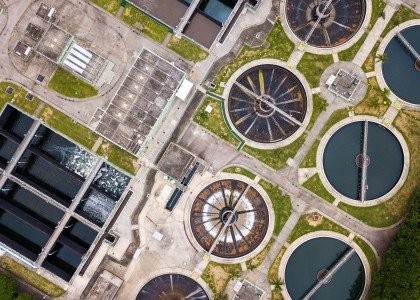Energy efficiency has come a long way. From its roots in the energy crises of the 1970s, it has grown and evolved to become an integral part of our energy landscape. Examples of energy efficiency advances are ubiquitous and often invisible. We see the results of such advances in the slow growth of electricity demand in recent years. Our homes, offices, businesses, and factories continue to become more energy efficient due to innovation in technologies and applications. Rooting out energy waste has spawned new ways of examining and managing how we use energy.
While energy efficiency has done much to improve our economy and environment, we want it to do more. Most states have policies and programs in place that seek to achieve even higher energy savings. A number of national efforts similarly aim to increase energy efficiency to achieve economic and environmental benefits. A clear example is the EPA Clean Power Plan, which seeks to achieve significant reductions in carbon emissions. Energy efficiency can play a major role in achieving emissions reductions under the plan.
After all this success with energy efficiency, what’s left? Have we reached the limit of how much energy efficiency we can squeeze out of our economy? This is a particularly vexing question for utilities and organizations that run efficiency programs for utility customers, and this is the subject of ACEEE's latest report, released today. While we're achieving higher overall savings from energy efficiency than ever before, a variety of factors are limiting the amount of such savings that efficiency programs can harvest:
- Building energy codes have become more stringent—requiring higher energy efficiency for new construction and major renovations.
- Appliance and equipment standards have increased.
- The number of customers who haven’t participated in relevant energy efficiency programs has diminished due to the success of some programs serving large numbers of customers.
The icon of energy efficiency—the compact fluorescent lightbulb (CFL)—has been the workhorse of efficiency program portfolios. This single technology has delivered large shares of energy savings for program administrators. However, with recent federal lighting standards in place, programs can no longer rely on CFLs to deliver such large savings. The recent standards raise the baseline against which savings are measured, thus reducing the savings that can be attributed to energy efficiency programs.
A team of ACEEE researchers examined the fundamental question, “What are the next large savings opportunities for energy efficiency?” The resulting research is described in the major report released today. The research objective was to identify a set of energy efficiency measures that are capable of delivering substantial energy savings by the year 2030. We use the term “measure” broadly—it includes individual end-use measures, system improvements, and even entire buildings or programs. We define substantial savings as at least 1% of total annual electricity sales in 2030 from the cumulative impact of each of the measures or programs from 2015 to 2030.
We identified a large set of measures that spanned the spectrum of residential, commercial, and industrial uses of electricity, and then we screened them based on our estimates of savings possible by 2030. The result was a set of 18 measures that we estimate collectively could save 22% of total projected electricity use in the year 2030. We bounded this mid-range estimate with a high case of 31% and low case of 15%. While this is not a comprehensive analysis of all energy-savings measures and programs, it represents a large share of the electricity savings potential. The top five measures are:
- Large reductions in key targeted plug loads
- Conservation voltage reduction
- New construction programs
- Comprehensive commercial building retrofits
- Smart manufacturing
Our analysis clearly shows that the well of energy savings from energy efficiency is not running dry. Instead, it is being replenished through advances in technologies and practices, system optimization, and behavioral approaches. While our analysis reveals a wealth of new and expanded opportunities for energy efficiency, a key conclusion is that no single measure will yield a dominant share of energy savings for utility program portfolios, as have CFL programs in the past. Without a single, dominant energy-efficient technology like the CFL, utilities and other program administrators will have to rely on a wider set of measures and attract greater numbers of participants. They also will have to ensure programs reach and serve all types of customers, including such often underserved markets as small businesses and multifamily housing.
Diversification is just one of the signs that energy efficiency has entered a new era. High levels of savings from programs and other advances in energy efficiency have helped to dramatically reduce US electricity demand. As this study shows, the future holds many opportunities for even greater energy savings. The cornucopia of energy efficiency will remain bountiful.


